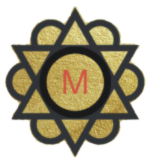
The tarot deck, a collection of 78 cards, is rich with symbolism that has evolved over centuries. Each card is imbued with layers of meaning, often drawing from a variety of cultural, historical, and psychological influences. The Major Arcana, consisting of 22 cards, represents significant life events and spiritual lessons, while the Minor Arcana, made up of 56 cards, reflects everyday experiences and challenges.
The imagery on each card serves as a visual language that communicates complex ideas and emotions. For instance, the Fool card, often depicted as a carefree traveler on the brink of a cliff, symbolizes new beginnings, spontaneity, and the courage to embark on an unknown journey. This imagery invites the reader to consider their own life choices and the potential for growth that comes from taking risks.
Moreover, the symbolism in tarot is not static; it can shift based on the context of a reading and the individual’s personal experiences. The colors, numbers, and elements associated with each card contribute to its meaning. For example, the color red often signifies passion and action, while blue may represent calmness and introspection.
The number associated with a card can also provide insight; for instance, the number three is often linked to creativity and collaboration, as seen in the Three of Cups, which celebrates friendship and community. By delving into these symbols, individuals can unlock deeper insights into their own lives and the world around them.
Key Takeaways
- Tarot cards are rich in symbolism and can be used as a tool for self-reflection and personal growth.
- They can provide insight into the subconscious mind, helping individuals to understand their thoughts and emotions on a deeper level.
- By recognizing patterns and themes in their lives, individuals can gain a better understanding of their behaviors and motivations.
- Tarot cards can also help in identifying potential obstacles and opportunities, allowing individuals to make more informed decisions.
- Exploring different perspectives and possibilities through tarot can lead to a greater sense of clarity and self-awareness.
Gaining insight into the subconscious mind
Tarot serves as a powerful tool for accessing the subconscious mind, a realm that often holds our deepest fears, desires, and unresolved issues. The act of drawing cards can act as a bridge between the conscious and unconscious aspects of our psyche. When individuals engage with tarot, they are prompted to reflect on their thoughts and feelings in a way that may not be possible through traditional introspection.
The cards can reveal hidden motivations or patterns that influence behavior, allowing for a more profound understanding of oneself. For example, if someone consistently draws cards related to conflict or struggle, it may indicate unresolved issues in their relationships or internal conflicts that need addressing. Additionally, tarot can facilitate a dialogue with the subconscious by encouraging individuals to interpret the cards in relation to their own lives.
This process often involves intuition and personal associations with the imagery presented. A person might draw the Eight of Swords, which depicts a figure bound and blindfolded amidst swords.
By engaging with these interpretations, individuals can uncover insights that lead to personal revelations and emotional healing.
Recognizing patterns and themes in your life

One of the most valuable aspects of tarot is its ability to highlight recurring patterns and themes in an individual’s life. As people engage with tarot over time, they may begin to notice specific cards appearing frequently in their readings. These repetitions can serve as indicators of ongoing issues or themes that require attention.
For instance, if someone frequently draws cards related to the concept of change—such as the Death card or the Wheel of Fortune—it may suggest that they are in a period of transition or that they resist necessary changes in their life. Recognizing these patterns can empower individuals to take proactive steps toward addressing them. Furthermore, tarot can illuminate connections between seemingly disparate events or experiences.
By examining the cards drawn in relation to specific questions or situations, individuals can identify underlying themes that may not be immediately apparent. For example, someone might draw cards that reflect both personal relationships and career aspirations in a single reading. This could reveal how their interpersonal dynamics influence their professional life or vice versa.
By recognizing these interconnected patterns, individuals can gain clarity on how various aspects of their lives interact and affect one another.
Identifying potential obstacles and opportunities
Tarot readings often serve as a mirror reflecting both potential obstacles and opportunities present in an individual’s life.
For instance, drawing the Tower card might indicate an impending upheaval or crisis that could disrupt stability but ultimately lead to transformation and renewal.
Conversely, cards like the Ace of Pentacles may signify new beginnings in terms of financial opportunities or career advancements. By identifying these elements within a reading, individuals can better navigate their circumstances. Moreover, tarot encourages individuals to confront their fears and limitations head-on.
When faced with challenging cards, such as the Devil or the Ten of Swords, individuals are prompted to reflect on what these obstacles represent in their lives. Are they self-imposed limitations? Are they external factors beyond their control?
This introspection can lead to actionable insights that empower individuals to overcome barriers and seize opportunities for growth. By recognizing both obstacles and opportunities through tarot, individuals can cultivate resilience and adaptability in their personal journeys.
Exploring different perspectives and possibilities
The nature of tarot invites exploration beyond conventional thinking by encouraging individuals to consider multiple perspectives and possibilities within their lives. Each card carries its own narrative and interpretation, allowing for diverse insights depending on how they are positioned within a spread or how they relate to one another. For example, drawing the Lovers card alongside the Five of Wands may prompt an individual to explore how conflict within relationships could lead to deeper understanding or growth rather than simply viewing it as a negative experience.
This multifaceted approach encourages flexibility in thinking and fosters creativity when addressing challenges. Additionally, tarot readings can serve as a catalyst for brainstorming new possibilities. When faced with difficult decisions or crossroads in life, individuals can use tarot to explore various outcomes based on different choices they might make.
For instance, drawing cards representing different paths—such as the Chariot for determination versus the Hanged Man for surrender—can help clarify which direction aligns best with one’s values and aspirations. This exploration not only enhances decision-making but also cultivates an openness to unexpected opportunities that may arise along one’s journey.
Using tarot as a tool for self-reflection and personal growth

Empowerment and Self-Discovery
Through tarot insights, individuals may feel empowered to make necessary changes in their lives, fostering resilience and adaptability. Tarot reinforces the belief that one has agency over their own path, a fundamental aspect of personal development.
A Comprehensive Approach to Personal Growth
Tarot offers a comprehensive framework for personal growth and transformation, exploring the self and understanding one’s place within the world. Through its rich symbolism, recognition of patterns, and exploration of perspectives, tarot invites individuals on an ongoing journey of self-discovery, leading to greater fulfillment and authenticity in their lives.
When seeking clarity through tarot cards, it is essential to understand the symbolism and meanings behind each card. One article that delves into this topic is “Unleashing the Power of the Tarot Card Magician”, which explores the significance of the Magician card in providing insight and guidance. By understanding the nuances of each card, such as the Magician’s ability to manifest desires and take action, individuals can gain a deeper perspective on their current situation and how to navigate it effectively.
FAQs
What are tarot cards?
Tarot cards are a deck of 78 cards that are often used for divination and gaining insight into various situations. Each card has its own symbolism and meaning.
How do tarot cards provide perspective?
Tarot cards provide perspective by offering a symbolic representation of different aspects of a situation. They can help individuals see their situation from a different angle and gain insight into potential outcomes.
Can tarot cards predict the future?
Tarot cards are not meant to predict the future with certainty. Instead, they offer guidance and insight into the current situation and potential outcomes based on the choices and actions of the individual.
Are tarot cards based on any specific religious or spiritual beliefs?
Tarot cards have roots in various spiritual and mystical traditions, including but not limited to, Kabbalah, astrology, and alchemy. However, their interpretation and use can vary widely among individuals and practitioners.
How can I use tarot cards to gain clarity in my situation?
To use tarot cards for gaining clarity, one can ask specific questions related to their situation and then interpret the cards drawn in relation to those questions. It’s important to approach tarot with an open mind and use it as a tool for self-reflection and insight.






